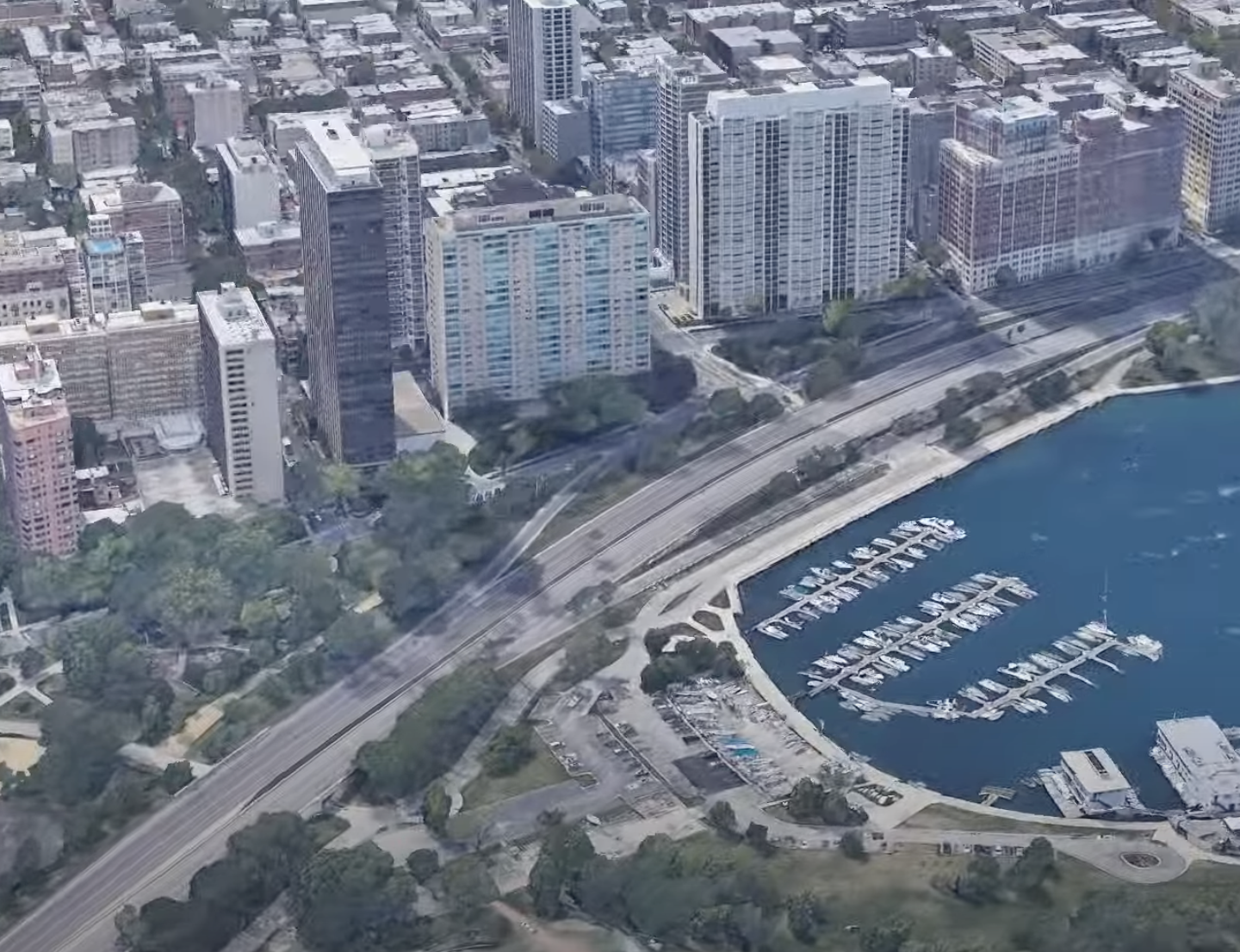Earlier this year Las Vegas-based planner and engineer (“plangineer”) and YouTuber Ray Delehanty, aka CityNerd, did a great job of identifying exactly what makes Chicago a wonderful place to live. In the video “Affordable Cities: 10 U.S. Metro Areas With Underrated Livability, Walkability, and Transit,” he looked at "what are the most affordable [cities over 250,000 people] to live in the U.S., but where good prices intersect with things city-lovers care about: public amenities, culture, sports, walkability, bike-ability, and transit service.” He ranked Chicago in first place.
However, in a new clip Delehanty is equally astute at identifying one of the very worst things about living in Chicago: the fact that we've walled off our gorgeous lakefront with an eight-lane highway. In the video "Highway Engineering Madness: 10 Waterfront Freeways That Need to Go (North America Edition)," he presents a rogue's gallery of cities that have squandered their shorelines to make driving more convenient, and Chicago once again tops the list.
"Waterfronts and riverfronts: In the world's truly great cities these are super-valuable, one-of-a-kind locations, places where you find incredible views, great recreation, dense housing, tourism (maybe too much tourism), but really you'll find everything," City Nerd states, showing inspiring images of Rio and (I think) Copenhagen.
"For some cities, though, they're just a very convenient place to put a freeway," he adds. "From a highway engineering perspective, siting freeways along waterfronts and riverfronts just makes sense: Shorelines are typically flat, requiring no structures or tunnels, and the natural barriers of a river, lake or ocean means fewer intersecting conflicts. It's a highway engineer's dream. But traffic engineering doesn't always (or usually) take account of competing objectives we might have for waterfronts, like active and recreational uses or dense mixed-use development."
Here's his hall of shame in this department:
- Gardiner Expressway (Toronto)
- I-278/Brooklyn-Queens Expressway (BQE) (Brooklyn Heights)
- I-5 (Portland)
- Storrow Drive (Boston)
- I-5 (Sacramento)
- I-787 (Albany)
- I-64 (Louisville)
- I-76 (Philadelphia)
- I-95 (Philly)
- I-5 (San Diego)
- I-705 (Tacoma)
- FDR Drive (New York)
- I-190 (Buffalo)
- I-580 (Berkeley / East Bay)
- I-376 (Pittsburgh)
- DuSable Lake Shore Drive (Chicago)
- I-91 (Hartford)
- I-293 (Manchester)
- I-25 (Denver)
- Hwy 315 (Columbus)
Delehanty saves the worst for last, DuSable Lake Shore Drive. "It sounds like it could be some sort of tree-lined boulevard," he says. "Eh, it's a drive, not a freeway. But make no mistake, outside of a short segment where it runs [by] Millenium and Grant parks, it's a freeway. What puts [Dusable] Lake Shore Drive over the top is just the land use. A fantastic greenbelt of beaches and parks, up and down the shore on the east side of the roadway, and tons of density and great views on the west side. It runs practically the length of the city, almost all at grade, as if to maximize the noise, the air pollution, and the physical barrier from the lakefront."

He notes that occasional tunnels under the highway do provide access to the shoreline for people on foot and bikes. "I don't know who's going to be excited about using that."
"Chicagoans, weigh in, does the existence of [DuSable] Lake Shore Drive bother you?" Delehanty asks. "Or have you just kind of convinced yourself it's not that bad? I'm interested in hearing from people who have to live with it."

The good news is that we don't have to live with eight lanes of car traffic. The North DuSable Lake Shore Drive reconstruction project could well result in two of the eight lanes being converted to bus-only lanes – if enough residents make it clear that's our preference. City and state transportation officials previously said the next public input meeting on the initiative will take place this winter, although they haven't announced it yet – we'll keep you posted.
And many advocates are pushing for a bolder vision for the lakefront that involves transforming the drive into a human-scale surface boulevards, with excess mixed-traffic lanes converted to make more room for transit, walking, biking, and green space.
It's about time Chicagoans stop letting the massive lakefront highway stand as a nationally-known embarrassment for our city.




